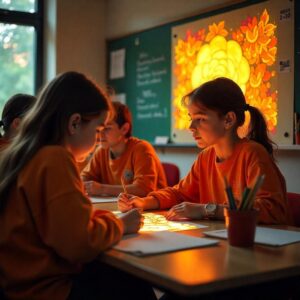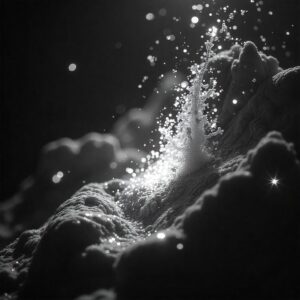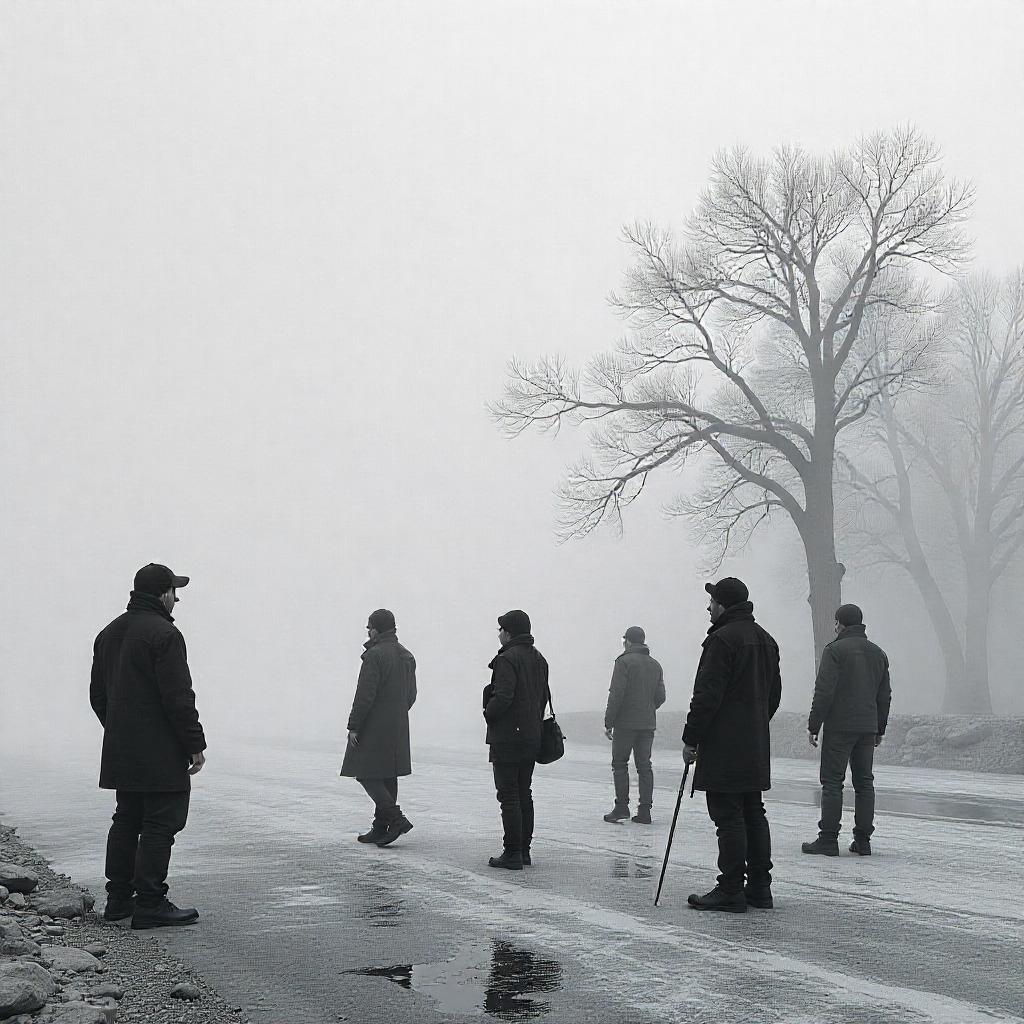Introduction
In the last decade, artificial intelligence (AI) has transformed various industries, from healthcare to entertainment. One of the most impressive areas of this revolution is artificial image generation, where MidJourney AI stands out as one of the most innovative and exciting tools available. This article will explore in-depth what MidJourney AI is, how it works, its applications, advantages and disadvantages, and its future in the realm of artificial intelligence and digital art.

1. What is MidJourney AI?
MidJourney AI is a platform that leverages advanced deep learning techniques to generate images from textual descriptions. This technology allows users to create stunning and unique visuals by simply providing a series of words or phrases that describe what they want to see. MidJourney has captured the attention of artists, designers, and content creators due to its ability to produce high-quality images that can be used in various contexts.
1.1. Historical Context
To fully appreciate the significance of MidJourney AI, it’s essential to understand the historical context of artificial intelligence in creative fields. The journey of AI in art began in the mid-20th century with simple algorithms that could create basic visual patterns. However, it wasn’t until the advent of deep learning and neural networks in the 2010s that AI began to produce complex and compelling images. MidJourney AI is a culmination of these advancements, combining powerful algorithms with vast datasets to generate images that rival human creativity.
1.2. Core Technologies
MidJourney AI utilizes several core technologies to function effectively:
- Generative Adversarial Networks (GANs): This technology consists of two neural networks—a generator and a discriminator—that work against each other. The generator creates images, while the discriminator evaluates them. Through this adversarial process, the generator improves its ability to produce realistic images over time.
- Diffusion Models: These models generate images by gradually refining random noise into coherent images, allowing for high-quality outputs that capture intricate details.
- Natural Language Processing (NLP): NLP techniques enable MidJourney to understand and interpret user inputs accurately, ensuring that the generated images align with the intended descriptions.

2. How Does MidJourney AI Work?
2.1. Deep Learning Algorithms
MidJourney AI is built on deep learning algorithms that can learn complex patterns from large datasets of images and text. These algorithms allow the AI to generate images that align with the user’s descriptions.
2.2. Image Generation Process
The image generation process in MidJourney can be broken down into several steps:
- Text Input: The user provides a textual description that can include details about style, color, composition, and other visual elements. The richness and specificity of this input play a crucial role in the quality of the output.
- Text Processing: The AI analyzes the input using natural language processing techniques to understand the meaning and intention behind the words. It identifies key concepts and visual elements that should be included in the image.
- Image Synthesis: Based on the processed text, the AI synthesizes an image, applying learned patterns and styles to create a visual representation of the description. This step may involve generating multiple iterations of an image to refine the output further.
- Output and Refinement: The generated image is presented to the user, who can request further refinements or adjustments based on their preferences. This iterative feedback loop allows for continuous improvement and customization.
2.3. User Interaction
MidJourney AI is designed to be user-friendly, allowing individuals with varying levels of technical expertise to engage with the platform. Users can interact with the AI through a straightforward interface, providing textual prompts and receiving visual outputs in real-time. This accessibility encourages creativity and experimentation, enabling users to explore different artistic directions.
3. Applications of MidJourney AI
MidJourney AI has a wide range of applications across various fields:
3.1. Art and Design
Artists and designers use MidJourney to create unique artwork, explore new styles, and generate concepts that can serve as inspiration for their projects. The platform allows for experimentation with different artistic techniques without the constraints of traditional methods. Artists can input vague descriptions and receive highly detailed images, providing a new way to brainstorm and visualize ideas.
3.2. Marketing and Advertising
In marketing, visual content is crucial for capturing audience attention. MidJourney AI enables marketers to generate tailored images for campaigns, social media posts, and advertisements, enhancing engagement and brand visibility. With the ability to create eye-catching visuals quickly, marketers can respond to trends and consumer demands more effectively, optimizing their strategies for success.

3.3. Entertainment and Gaming
Game developers and filmmakers can use MidJourney to create concept art, character designs, and environments. This accelerates the creative process, allowing for rapid prototyping and visualization of ideas. By generating assets quickly, creators can focus on storytelling and gameplay mechanics, enhancing the overall quality of their projects.
3.4. Education and Training
Educational institutions and training programs can leverage MidJourney AI to create illustrative materials, infographics, and visual aids that enhance learning experiences. The ability to generate custom visuals makes it easier to convey complex concepts. For instance, teachers can create engaging diagrams or illustrations that cater to diverse learning styles, fostering better understanding among students.
3.5. Fashion and Product Design
In the fashion industry, MidJourney can assist designers in visualizing clothing and accessory concepts before production. By generating images based on specific themes or trends, designers can experiment with various styles and combinations, streamlining the creative process. Similarly, product designers can use MidJourney to create visual mockups of new products, aiding in marketing and presentation efforts.
3.6. Architecture and Interior Design
Architects and interior designers can utilize MidJourney to create visual representations of their ideas, helping clients visualize spaces before construction or renovation. By generating images of proposed designs, professionals can communicate their visions more effectively and receive feedback from clients early in the process.
4. Advantages of MidJourney AI
MidJourney AI offers several advantages that make it a valuable tool for users:
4.1. Speed and Efficiency
The ability to generate high-quality images in a matter of seconds significantly reduces the time and effort required for artistic creation. This efficiency allows users to focus on refining their ideas rather than getting bogged down in the technical aspects of image creation. For industries that rely on rapid turnaround times, such as advertising, this speed is invaluable.
4.2. Accessibility
MidJourney democratizes art and design by making it accessible to individuals without extensive artistic skills. Anyone can create visually appealing content with minimal effort, opening up new opportunities for creativity. This accessibility fosters a more inclusive creative community, where diverse voices and ideas can flourish.
4.3. Customization and Flexibility
Users have the freedom to experiment with various styles and themes, leading to a diverse range of outputs. MidJourney can accommodate a wide variety of artistic preferences, making it a versatile tool for different projects. This flexibility enables users to explore unconventional ideas and push the boundaries of traditional art forms.

4.4. Continuous Learning
As a machine learning model, MidJourney AI continuously improves as it is exposed to more data. This means that the quality of generated images will likely improve over time, providing users with even better results. The iterative nature of machine learning allows MidJourney to adapt and evolve alongside changing artistic trends and user preferences.
4.5. Collaborative Opportunities
MidJourney AI encourages collaboration among artists, designers, and creators. By generating initial concepts, it can serve as a starting point for collaborative projects, allowing multiple individuals to contribute their ideas and expertise. This collaborative aspect can lead to innovative outcomes that may not have been possible through individual efforts.
5. Disadvantages of MidJourney AI
While MidJourney AI has many benefits, there are also some drawbacks to consider:
5.1. Quality Control
The quality of generated images can vary based on the input provided. Users may need to refine their descriptions multiple times to achieve the desired outcome, which can be frustrating. This variability can deter some users who seek consistent quality in their creative outputs.
5.2. Ethical Concerns
The use of AI-generated images raises ethical questions regarding originality and ownership. Artists may be concerned about the implications of using AI in their creative processes, particularly regarding copyright issues. The blurred lines between human and machine-generated art can complicate discussions about intellectual property rights and artistic integrity.
5.3. Dependence on Technology
As users become reliant on AI tools like MidJourney, there is a risk of diminishing traditional artistic skills. This dependence could impact the development of individual creativity and expression. While AI can enhance creativity, it is essential for artists to maintain their unique voices and techniques.
5.4. Potential for Misuse
The power of AI-generated images can also be misused, leading to the creation of misleading or harmful content. For example, individuals could use MidJourney to generate fake images for malicious purposes, such as spreading misinformation or creating inappropriate content. Addressing these ethical concerns is crucial for the responsible use of AI technologies.
6. The Future of MidJourney AI
The future of MidJourney AI is promising, with potential advancements and developments on the horizon:
6.1. Enhanced Personalization
Future iterations of MidJourney AI may incorporate more advanced personalization features, allowing users to create images that resonate even more closely with their unique styles and preferences. By learning from user interactions and feedback, MidJourney could tailor its outputs to align with individual artistic sensibilities.
6.2. Integration with Other Technologies
As AI continues to evolve, MidJourney could integrate with other technologies, such as virtual reality (VR) and augmented reality (AR), to create immersive experiences that blend digital art with real-world environments. This integration could open up new avenues for interactive storytelling and artistic expression.
6.3. Expanding Applications
The applications of MidJourney AI could expand into new fields, including architecture, fashion design, and product development, further enhancing creative possibilities across industries. As the technology matures, it may find use in areas such as medical imaging, scientific visualization, and environmental design.
6.4. Community and Collaboration
MidJourney AI has the potential to foster a vibrant community of creators who share their works and collaborate on projects. By providing a platform for artists to showcase their AI-generated art, MidJourney can facilitate connections and inspire collaboration among diverse creators.
6.5. Ethical Frameworks
As AI technologies become more integrated into creative processes, it will be essential to establish ethical frameworks that govern their use. This may involve discussions around copyright, ownership, and the responsible use of AI-generated content. Developing guidelines that promote ethical practices will be crucial for ensuring the positive impact of MidJourney AI on the artistic community.
Conclusion
MidJourney AI represents a significant leap forward in the field of artificial intelligence and image generation. By enabling users to create high-quality visuals from simple text descriptions, it opens up new avenues for creativity and innovation. While there are challenges to consider, the potential benefits and applications of this technology are vast. As MidJourney continues to evolve, it will undoubtedly play a pivotal role in shaping the future of art and design in the digital age.
The intersection of AI and creativity presents exciting opportunities for artists, designers, and creators of all kinds. By embracing tools like MidJourney AI, individuals can explore new dimensions of artistic expression, pushing the boundaries of what is possible. As we navigate this evolving landscape, it is essential to remain mindful of the ethical implications and responsibilities that come with harnessing the power of artificial intelligence in the creative process.


1 thought on “MidJourney AI: Revolutionizing Image Generation with Artificial Intelligence”